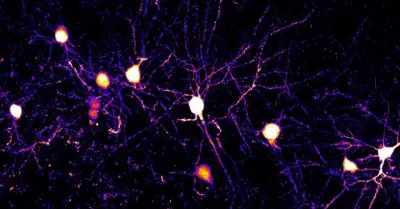UCSD insights into how our brains learn could boost research on Alzheimer’s, autism, even A.I.

Neurons and their branch extensions known as dendrites are featured within a mouse s cerebral cortex Photo courtesy of UC San Diego School of Biological Sciences Scientists at UC San Diego have uncovered processes that explain how our brains record new information which could help aid advancements in brain and behavioral disorders and even artificial intelligence As new information is learned the brain s circuitry undergoes a change in order to accommodate it While neuroscientists have closely studied how certain synapses within the brain strengthen with new information and others weaken there has been a lack of understanding as to what dictates this process UC San Diego neurobiologists William Jake Wright Nathan Hedrick and Takaki Komiyama have discovered key details about this process and their results were published Thursday in the journal Science The researchers used a cutting-edge visualization methodology to zoom into the brain activity of mice and track the exercises of synapses and neuron cells during learning programs Previously it was assumed that neurons followed a single set of rules during episodes of learning But with the ability to see individual synapses like never before the material revealed that individual neurons follow multiple rules with synapses in different regions of the brain following different rules When people talk about synaptic plasticity it s typically regarded as uniform within the brain commented Wright a postdoctoral scholar in the School of Biological Sciences and first author of the examination Our research provides a clearer understanding of how synapses are being modified during learning with potentially key wellbeing implications since a large number of diseases in the brain involve certain form of synaptic dysfunction Neuroscientists have attentively studied how synapses only have access to their own local information yet collectively they help shape broad new learned behaviors a conundrum labeled as the credit assignment complication This discovery fundamentally changes the way we understand how the brain solves the credit assignment predicament with the concept that individual neurons perform distinct computations in parallel in different sub-cellular compartments explained Komiyama senior analysis author and professor in the departments of Neurobiology and Neurosciences The new information offers promising insights for the future of A I and the brain-like neural networks upon which it operates For instance the possibility of designing new advanced A I systems using multiple rules across singular units For wellness and behavior the findings could offer a new way to treat conditions including addiction post-traumatic stress disorder and Alzheimer s disorder as well as neurodevelopmental disorders such as autism This work is laying a expected foundation of trying to understand how the brain normally works to allow us to better understand what s going wrong in these different diseases explained Wright The main financial help for this multi-year assessment was provided by several National Institutes of Healthcare research grants and a training grant


